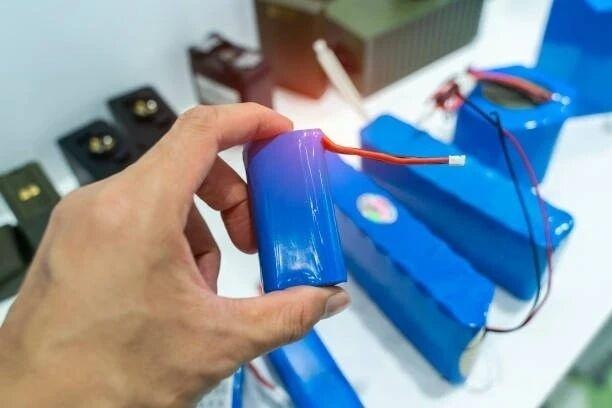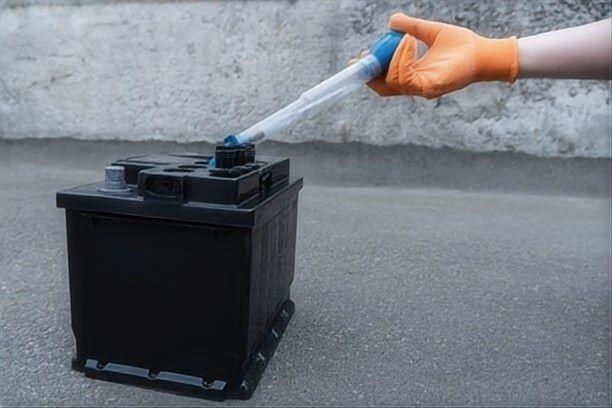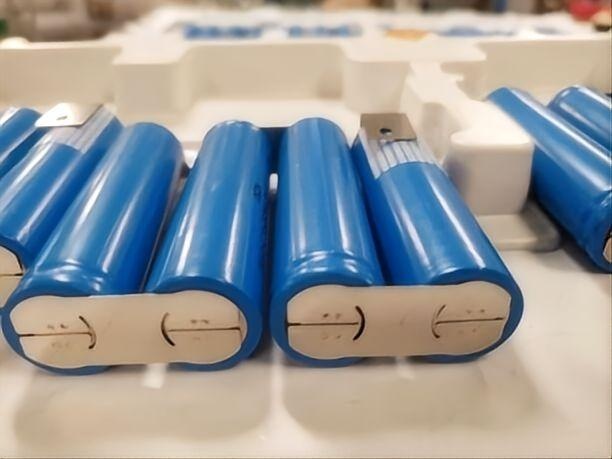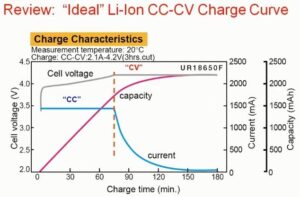1. Comprehensive introduction to lithium-ion batteries
1.1 What is a lithium-ion battery and its working principle
Lithium-ion batteries, also known as lithium-ion cells, are rechargeable batteries that utilize lithium ions to store energy. They consist of a positively charged electrode (cathode) and a negatively charged electrode (anode). During charging, lithium ions move from the cathode to the anode, generating an electric current. The opposite process occurs during discharging. The cathode is typically a lithium-based material that controls the battery’s capacity and voltage. Graphite is commonly used as the anode material. The electrolyte, composed of lithium salts dissolved in organic solvents, lies between the cathode and anode. The final component of a lithium-ion battery is the separator, which acts as a physical barrier between the cathode and anode. It allows lithium ions to move within the battery while preventing the entry of electrons. Lithium ions are generated at the cathode, transported by the electrolyte, move through the separator to the anode, and are stored there during battery charging.
1.2 Advantages of lithium-ion batteries
Lithium-ion batteries are a commonly used type of battery, possessing numerous advantages, including:
·Due to the electrodes being made of lightweight materials, it is lighter than other batteries.
·Long lifespan, capable of maintaining its charge for an extended period.
Compared to other battery types such as lead-acid batteries, they have a higher energy density.
·They have a higher depth of discharge and can handle multiple charge and discharge cycles.
1.3 Common types of lithium batteries
Although electronic devices use lithium batteries, not all of them use the same type of battery. This is because each device is only compatible with a certain type of battery. There are various types of lithium batteries, depending on the materials used to manufacture the electrodes and the chemical reactions occurring within the battery.
1. Lithium iron phosphate (LFP) battery: LFP batteries utilize lithium iron phosphate (LiFePO4) as the cathode material and graphite as the anode. Lithium iron phosphate exhibits excellent electrochemical performance, thermal stability, low resistance, and a longer lifespan, making it one of the safest lithium batteries available.
2. Lithium titanate (Li2TiO3 or LTO) battery: Compared with other lithium-ion batteries, lithium titanate batteries have faster charging times and a longer lifespan.
3. Lithium manganate (LiMn2O4 or LMO) battery: Lithium manganate batteries exhibit thermal stability and safety.
4. Lithium cobaltate (LiCoO2 or LCO) battery: This type of lithium battery can provide power for a relatively long period of time.
5. Lithium Nickel Manganese Cobalt Oxide (NMC) Battery: NMC batteries utilize a combination of cobalt, manganese, and nickel as the cathode material. The combination of these elements produces a stable chemical substance with high specific energy.
6. Lithium nickel cobalt aluminum oxide (NCA) battery: NCA batteries have a long lifespan and high specific energy, allowing them to safely deliver a large amount of current for a longer period of time.

2. General introduction to lead-acid batteries
2.1 What is a lead-acid battery and its working principle
A lead-acid battery is a rechargeable battery that typically uses porous lead as the negatively charged anode and an oxide (lead dioxide) as the cathode. Both the cathode and anode are immersed in an electrolyte consisting of an acidic solution of dilute sulfuric acid. Immerging the electrodes in the electrolyte triggers a chemical reaction. Chemical reactions occur inside the battery, releasing an electric current that flows through the electrodes.
2.2 Advantages of lead-acid batteries
Lead-acid batteries have several advantages, as outlined below:
·Cheap price. That’s why it is widely used in the current market.
Among all rechargeable batteries, they have the lowest self-discharge rate.
Lead-acid batteries require little maintenance and can perform well under harsh conditions.
·High specific power, capable of generating high discharge current.
2.3 Common types of lead-acid batteries
Different types of lead-acid batteries have been developed over the years. Please continue reading to learn more about these batteries.
1. Flooded Lead-Acid (FLA) Battery: FLA-type lead-acid batteries are widely used in the automotive industry. They are cost-effective and are the cheapest batteries on the market. Although modern FLA batteries come in two types (maintainable and maintenance-free), traditional models require extensive maintenance, such as cleaning terminals, topping up water, and equalizing charging to extend their lifespan.
2. Sealed Lead-Acid (SLA) Batteries: Also known as Valve-Regulated Lead-Acid (VLRA) batteries, this type of battery has its electrolyte enclosed in a sealed container and equipped with a valve that allows for the release of gas accumulated within the battery system. Unlike FLA batteries, these batteries contain less electrolyte and do not degrade as quickly. SLA batteries are the safest type of lead-acid batteries.
Two common types of SLA batteries are Absorbed Glass Mat (AGM) and gel. AGM has a large capacity and small packaging; it provides the highest efficiency and is suitable for UPS and mobile vehicles. Gel consists of silica-based gel electrolyte; due to this characteristic, they can be easily transported.

3. Lithium-ion battery vs. lead-acid battery: a comprehensive comparison
3.1 Safety
Lead-acid batteries release hydrogen and oxygen gas when overcharged. These gases are highly flammable and can cause battery explosion or human poisoning if not properly ventilated. However, most lead-acid batteries on the market are valve-regulated, making them safe to use. In contrast, lithium batteries do not release any harmful substances during use. Lithium-ion batteries also pose safety hazards due to thermal runaway. To avoid potential dangers posed by batteries, many lithium battery manufacturers add a Battery Management System (BMS) to their products, which reduces the risk of failure and ensures the safety of the cells. Each industry that uses these batteries has rules guiding their manufacture to ensure their safe use, and most importantly, both types of batteries should be handled with care.

3.2 Cost
Cost-effectiveness is another factor that many people consider when purchasing batteries. This is the main difference between lead-acid batteries and lithium-ion batteries. Lead-acid batteries are a cheaper option for battery installation. For batteries of the same size and capacity, lithium-ion batteries are usually twice as expensive as comparable lead-acid batteries. However, in terms of the lifespan of these batteries, lithium-ion batteries have a much longer lifespan than lead-acid batteries. The lifespan value of lithium-ion batteries will be twice that of lead-acid batteries. Therefore, for short-term stationary applications with low energy demand, lead-acid batteries are simply a cheaper option. In contrast, if you want to use batteries as a power source for long-term use, lithium batteries are a more cost-effective choice
3.3 Weight and Dimensions
No one wants to carry around bulky batteries. That’s why many users prefer lightweight batteries that take up as little space as possible. Lead-acid batteries contain lead, which is a high-density material, while lithium-ion batteries contain lithium, a material that is 55% lighter than lead. Lead-acid batteries contain a large amount of lead, and their weight is five times that of lithium-ion batteries. In addition, lithium-ion batteries have a higher energy density and do not require as much physical space as lead-acid batteries, making them lighter in weight and size compared to lead-acid batteries.
3.4 Capacity
Battery capacity is a measure of the amount of energy that can be stored and ultimately discharged within a unit volume of a battery. The capacity of a battery directly indicates how much active material is contained within it. Although battery capacity may vary depending on the model and manufacturer, one thing remains the same: lithium-ion batteries have significantly higher energy density and battery capacity compared to lead-acid batteries. Using the same space, lithium-ion batteries can store more energy than lead-acid batteries. Due to the higher energy storage capacity of lithium-ion technology, you can power more devices and release more energy for a considerably longer period of time.
3.5 Charge and discharge characteristics
The depth of discharge (DOD) of a battery refers to the maximum energy that a fully charged battery can utilize before it needs to be recharged. It measures how much battery energy you can safely consume without causing any damage to the battery. The DOD for lead-acid batteries is 50%, and exceeding this depth may have a negative impact on the battery’s lifespan, while lithium-ion batteries have a higher DOD, which can reach 80% or even higher. The higher DOD of lithium-ion batteries enables them to have a higher effective usable capacity compared to lead-acid batteries. In terms of charging time, lithium-ion batteries only take a few minutes to three hours to fully charge. Lead-acid batteries of similar size may take 10 hours or more to fully charge, which is crucial for time-sensitive applications with less rest intervals and more usage time.
3.6 Lifespan
The cycle life of a battery refers to the number of charging cycles it can undergo without compromising its performance. When a battery is discharged (from a power supply device) and recharged, this is considered one charging cycle. The lifespan of a battery is typically measured based on the number of charging cycles it can undergo before it reaches the end of its life. It is important to note that the depth of discharge directly affects the cycle life of a battery; deeper discharges put more stress on the battery, thereby shortening its lifespan and reducing its efficiency. In summary, batteries with a longer cycle life have a longer lifespan than those with a shorter cycle life. Typically, lead-acid batteries have a cycle life of about 300-500 cycles, lasting for about one to two years. On the other hand, lithium-ion batteries have a much longer cycle life. Lithium iron phosphate batteries are known for their longer lifespan, with a cycle life exceeding 4,000 cycles, lasting for 10 years, and some high-end varieties having a lifespan of up to 15 years or more.



